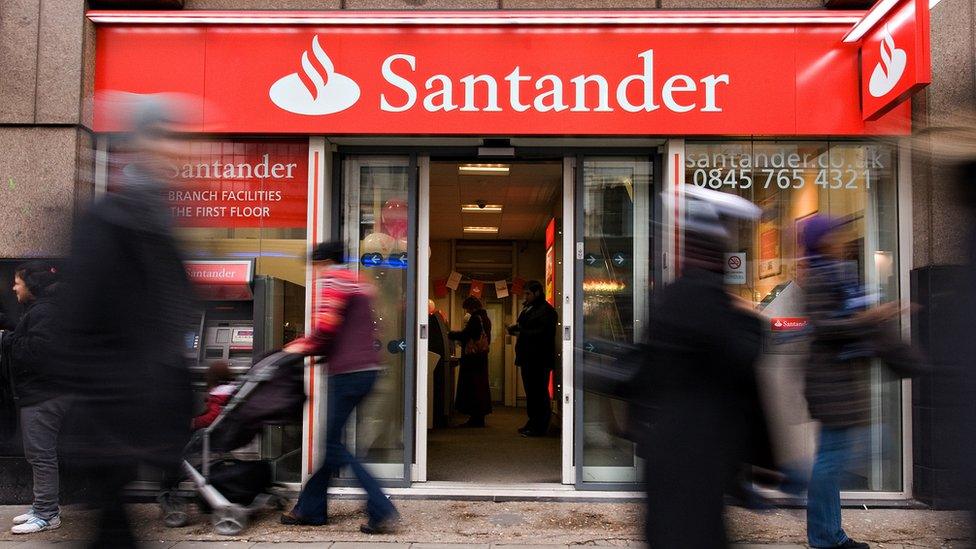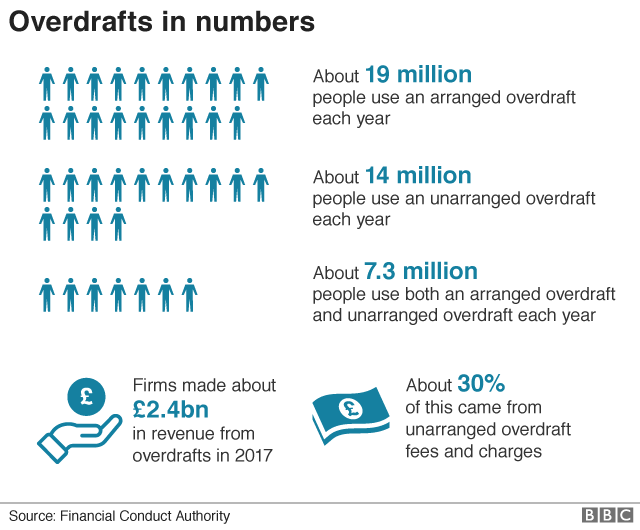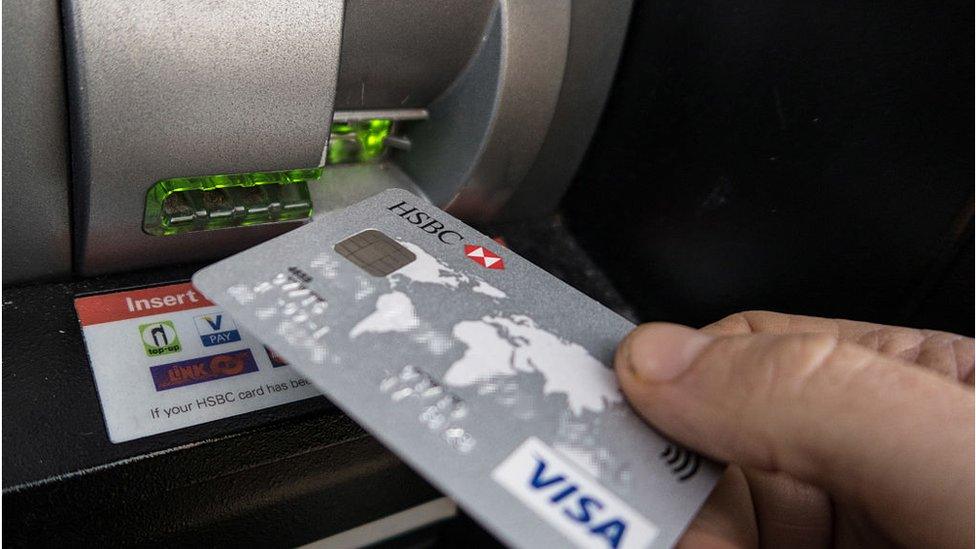Santander latest bank to set 40% overdraft rate
- Published
- comments

Millions of people with Santander's popular current account face a cut in the interest paid amid changes for savers and borrowers.
The bank has announced that, from 5 May, the interest paid on balances up to £20,000 in its 123 account will be cut from 1.5% to 1%.
The move has prompted one commentator to describe the account as a "dead duck" for savers.
Santander has joined other big brands in setting a 39.9% overdraft rate.
This will take effect on 6 April and comes in response to tough new rules from regulators designed to protect consumers.
How will savers be affected?
Between March 2012 and November 2016, those with up to £20,000 in their 123 account earned 3% in savings interest a year. This, alongside some significant marketing, prompted a host of customers to sign up for the account.
The rate then dropped to 1.5% and, from May, will fall to 1%. Cashback benefits on household utility bills will also become less generous. The account fee of £5 a month remains.
Susan Allen, head of retail banking at Santander, said: "While we have had to make some difficult decisions in the current environment, our current account range remains very competitive."
However, Martin Lewis, founder of Moneysavingexpert, described the account as a "dead duck" for savers.
"There's little reason for anyone to stick to it. In May it cuts interest to 1%, that's substantially less interest than the top paying easy access savings. The irony is that until this announcement, Santander 123 was primed for a comeback [as the rate] was looking good again," he said.
Most people's current accounts pay little or no interest, and savings accounts' rates have been falling in recent weeks. The best easy access rates at the moment are about 1.4%, amid a low interest rates economic environment.
What is happening to the cost of an overdraft?
The Financial Conduct Authority, the City watchdog, is planning to shake up the "dysfunctional" overdraft market, by stopping banks and building societies from charging higher prices for unarranged overdrafts than for arranged overdrafts.
The new rules, which come into force in April, require providers to charge a simple annual interest rate on all overdrafts and to get rid of fixed fees.

The result has been bunching among banks and building societies - with most setting a rate very close to 40%.
That would mean somebody who borrowed £100 as an overdraft for a whole year would pay £40 to the bank for the service.
Nationwide, HSBC and RBS have all set their rate at just above 39%, with Barclays setting its rate at 35%.
The majority of customers, primarily those with an unarranged overdraft, would be better off under these rates, but some who had arranged their overdraft facility would be worse off.
"We have a range of support services in place - from our over-the-phone experts to our in-branch workshops - and would encourage any customer who would like help in understanding the impact of these changes, or any other aspect of managing their money, to get in touch," Ms Allen said.
- Published5 December 2019

- Published7 June 2019
